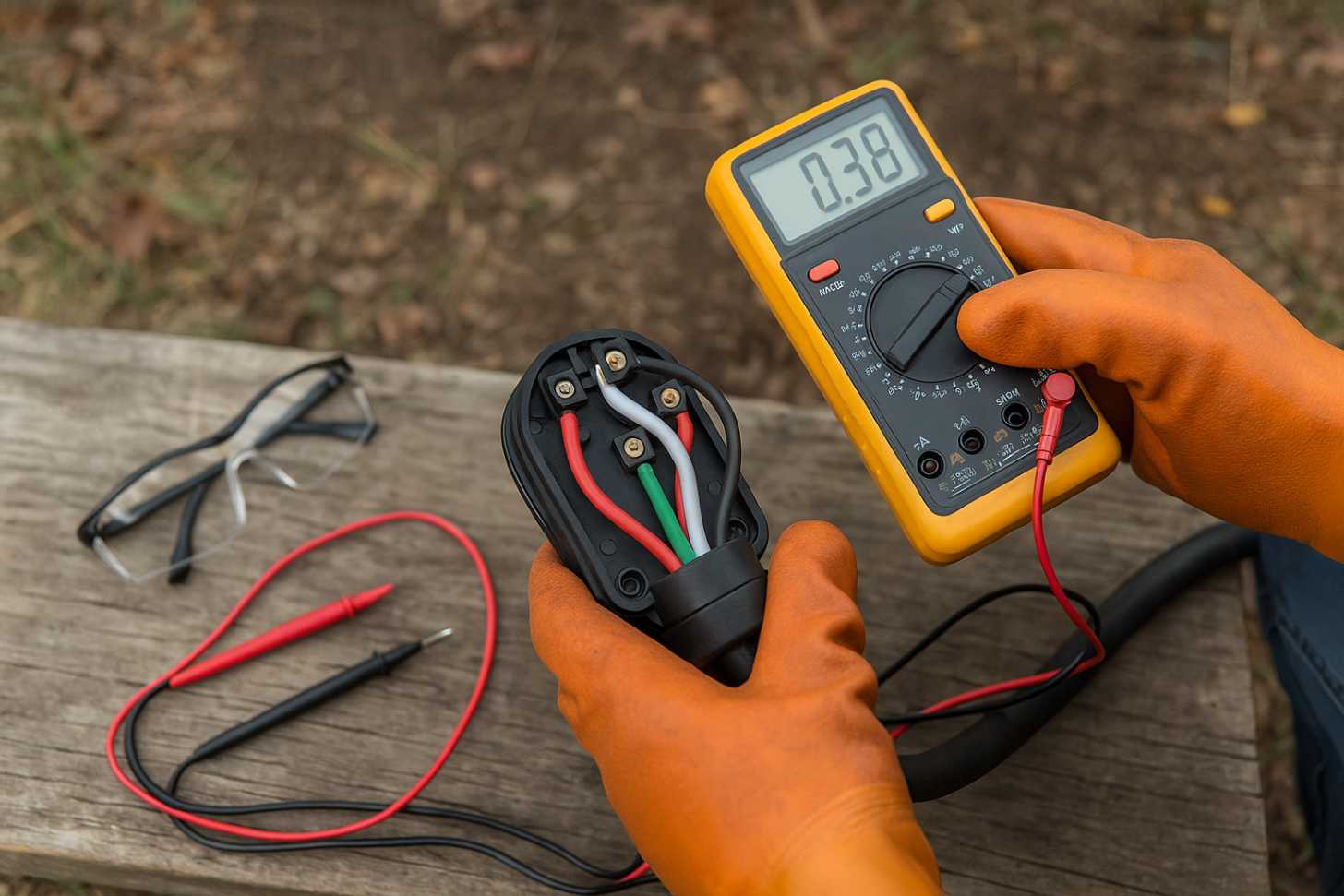A few years ago, I was living on the road full-time in my RV, testing the waters of off-grid living. I remember the first time I hooked up to a power source at a campsite and realized I had no idea what I was doing. I’d never wired a 50 amp RV plug before, and as a former diesel mechanic, I was confident in fixing engines, but electrical work? That was a whole new ball game.
So, after a few YouTube videos and a handful of troubleshooting moments, I figured it out. And now, I’m here to share the knowledge with you, so you don’t have to go through the same trial and error.
Wiring a 50 amp RV plug isn’t as complicated as it seems—it just requires a little know-how and some patience. Here’s a breakdown of everything you need to know about wiring a 50 amp RV plug, step by step.
What is a 50 Amp RV Plug? How Does a 50 Amp RV Cord Work?
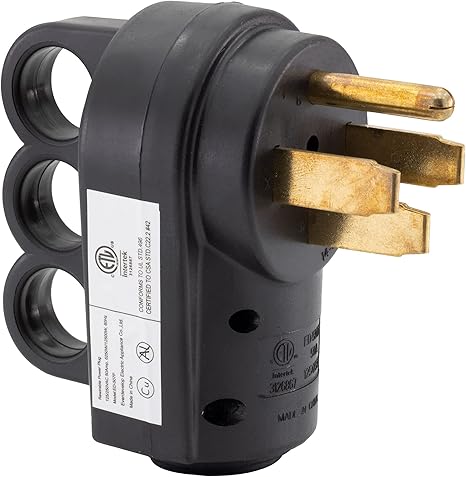
Image source- Amazon
Before diving into the wiring, let’s take a moment to understand what we’re dealing with.
A 50 amp RV plug is essential for larger RVs, especially those with high-power appliances like air conditioners, microwaves, and refrigerators.
Unlike a 30 amp plug that provides 120 volts of power, a 50 amp plug delivers 120/240-volt split-phase power, allowing your rig to run more high-energy systems simultaneously.
This plug has four prongs:
- Two hot wires (usually black and red), each carrying 120 volts.
- One neutral wire (white), which helps complete the circuit.
- One ground wire (green) for safety.
Now that you understand what makes up the cord, let’s move on to how to wire it.
Materials You’ll Need to Wire a 50 Amp RV Plug
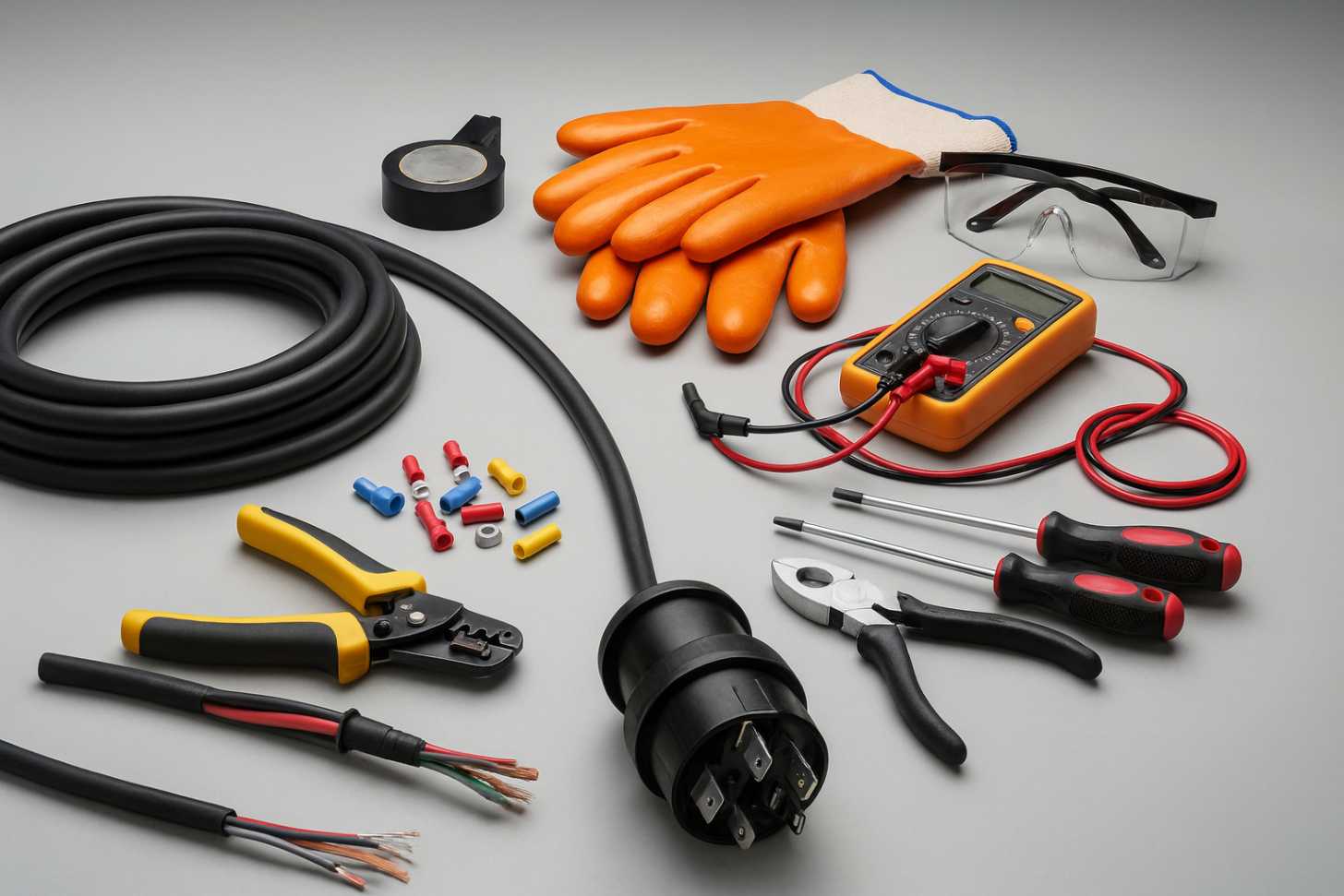
The first thing you’ll need is the right gear. Here’s what you’ll need:
- 50 amp RV plug (preferably a quality, well-made one)
- Electrical cable (appropriate gauge, usually 6/3 or 6/4)
- Wire strippers, screwdrivers, and pliers
- Multimeter (for testing the connections)
- Insulated gloves and safety glasses (safety first!)
- Optional: Electrical tape and wire connectors
Once you’ve got all that, you’re ready to start. Make sure the power is OFF before you touch any wires. I cannot stress this enough!
How to Wire a 50 Amp RV Plug: Step-by-Step
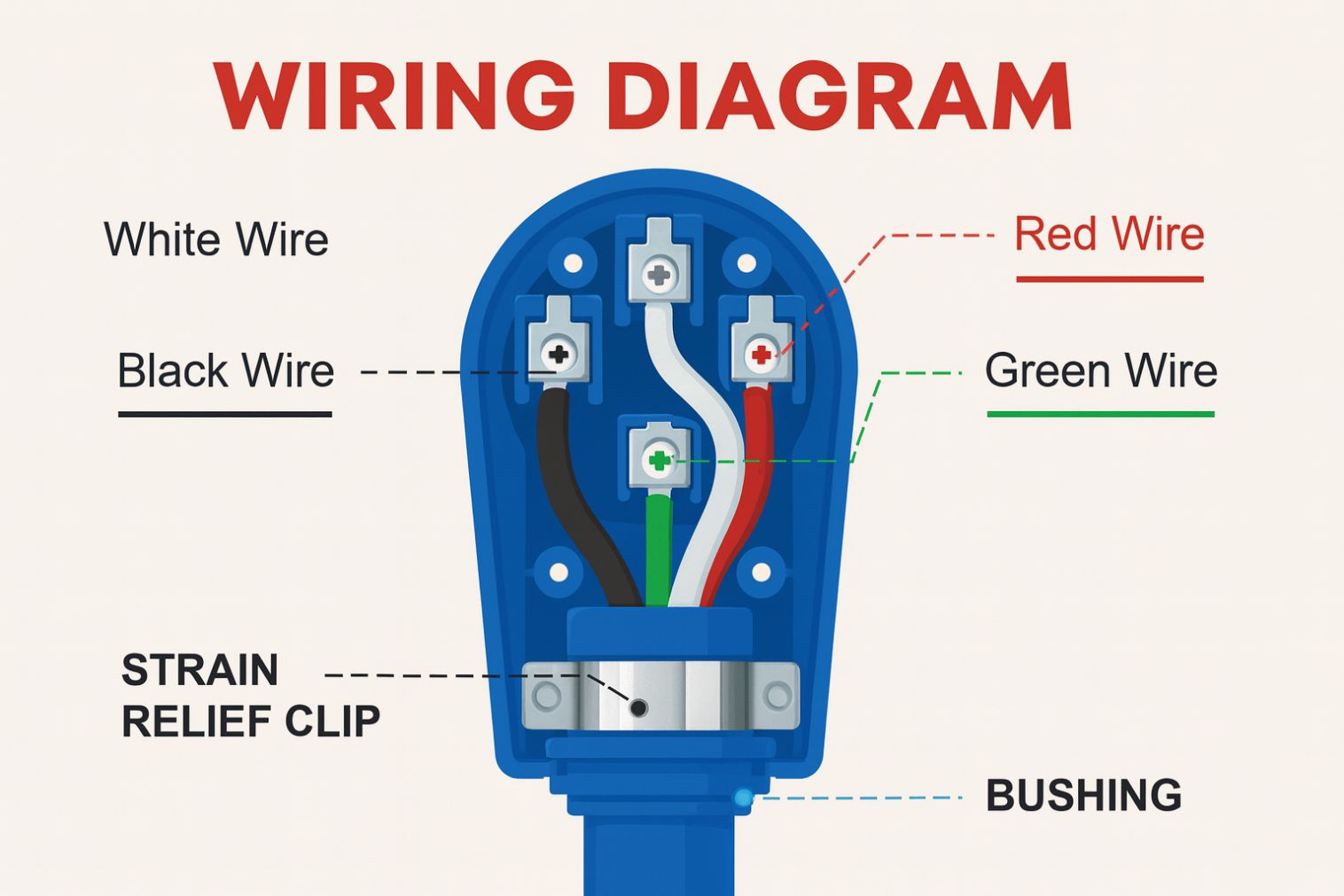
Now, let’s get to the fun part: actually wiring the plug. If you follow these steps, you’ll be done in no time.
Step 1: Prepare the Cable
Measure how much electrical cable you’ll need to reach your power source—without too much slack.
Once you have the right length, use your wire stripper to carefully strip off the outer insulation.
You’ll want to avoid damaging the individual wires inside. Trust me, I’ve been there, and it’s not fun having to redo the job because of a small mistake.
Step 2: Identify the Wires
You’ll find four wires inside the cable:
- Black wire: This is your first hot wire.
- Red wire: This is your second hot wire.
- White wire: This is the neutral wire.
- Green wire: This is the ground wire.
Strip about an inch of insulation off each wire, exposing the copper beneath. Be careful not to nick the wire, as this can cause a weak connection.
Step 3: Connect the Wires to the Plug
Now it’s time to connect the wires to the plug. The terminals on the 50 amp RV plug should be clearly labeled, and each wire has its place.
- Black wire: Connect it to the L1 hot terminal.
- Red wire: Connect it to the L2 hot terminal.
- White wire: This goes to the neutral terminal.
- Green wire: This is your ground wire, and it should connect to the ground terminal.
Tighten all the screws securely, making sure the wires are properly seated in their terminals.
Step 4: Assemble the Plug
Once all the wires are connected, carefully place the housing back in place and tighten the screws on the casing. Make sure the wires aren’t pinched or exposed—proper insulation is key. Now you’re ready to move on to testing.
How to test 50 amp RV outlet with multimeter?
Before plugging your RV into the electrical outlet, you’ll want to test the connection with a multimeter.
This is crucial to ensure that everything is wired correctly and that the voltage and polarity are right.
Set the multimeter to measure AC voltage, and check each terminal for the correct readings.
Make sure the power is OFF while you do this, and if you’re uncertain at any step, don’t hesitate to call in an electrician. Safety is the number one priority.
Safety Precautions: Don’t Skip This Part!
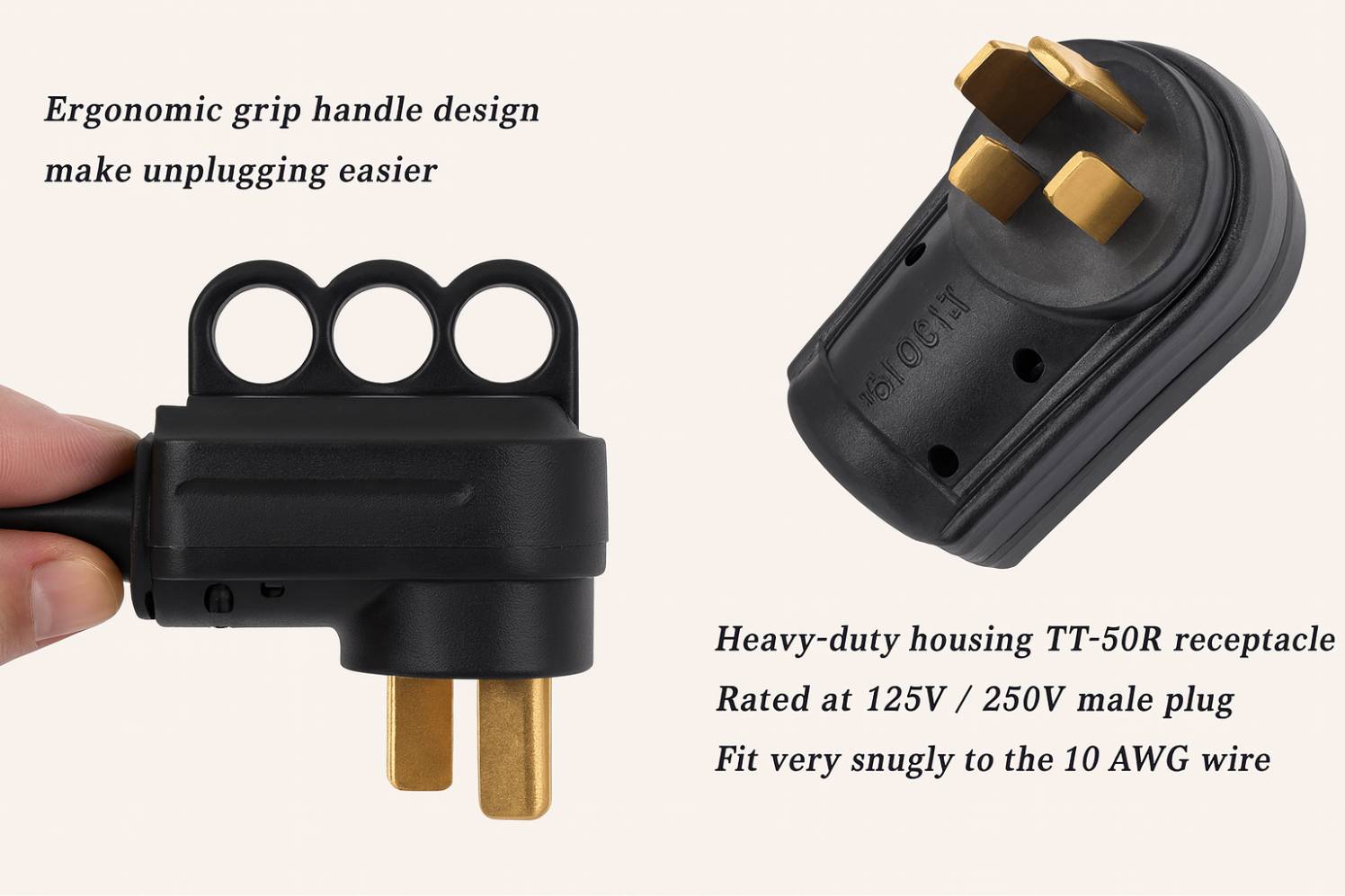
Working with electricity can be dangerous, so let’s go over some essential safety tips:
- Always turn off the power before working with any electrical wiring.
- Wear insulated gloves and safety glasses—this isn’t the time to take chances.
- Inspect your RV’s electrical system periodically, even if you’ve wired everything correctly. Prevention is key.
- Consult a professional if you’re uncomfortable doing the work yourself. There’s no shame in asking for help when it comes to electrical work!
FAQs About Wiring a 50 Amp RV Plug
1. What size cable do I need for a 50 amp RV plug?
The recommended gauge for a 50 amp RV plug is 6/3 or 6/4 cable. This ensures that the wires can handle the load without overheating or causing a fire hazard. Always double-check the specifications on your plug to confirm the required cable gauge.
2. Can I use a 30 amp plug instead of a 50 amp plug for my RV?
While a 30 amp plug can work for smaller RVs, it’s not suitable for rigs that require more power. If your RV has high-power appliances like air conditioners or a large fridge, you need the 50 amp RV plug to provide sufficient power. A 30 amp plug could cause overloads and potentially damage your RV’s systems.
3. How can I tell if my 50 amp RV plug is wired correctly?
Use a multimeter to check the voltage and polarity. A correctly wired 50 amp RV plug should have 120 volts between the hot wires (L1 and L2) and 0 volts between the neutral and ground. If you get anything different, it’s time to troubleshoot!
4. Is it necessary to hire an electrician to wire a 50 amp RV plug?
If you’re comfortable with electrical work and follow all safety precautions, you can wire the plug yourself. However, if you’re not confident in your abilities, it’s always best to consult a professional. It’s better to be safe than sorry!
Don’t Let Your RV Wiring Be a Headache
Wiring a 50 amp RV plug might seem daunting at first, but with the right tools, a bit of patience, and a clear guide, it’s a project that anyone can tackle.
The key is to take it slow, double-check your work, and—most importantly—stay safe. Your RV’s electrical system is vital to keeping everything running smoothly, so knowing how to wire that plug correctly will save you a lot of stress down the road.
Here’s my tip: take the time to understand the wiring diagram and the role of each wire. Once you know what each wire does, it’s much easier to troubleshoot issues in the future.
Stay safe, enjoy the road, and happy wiring!
